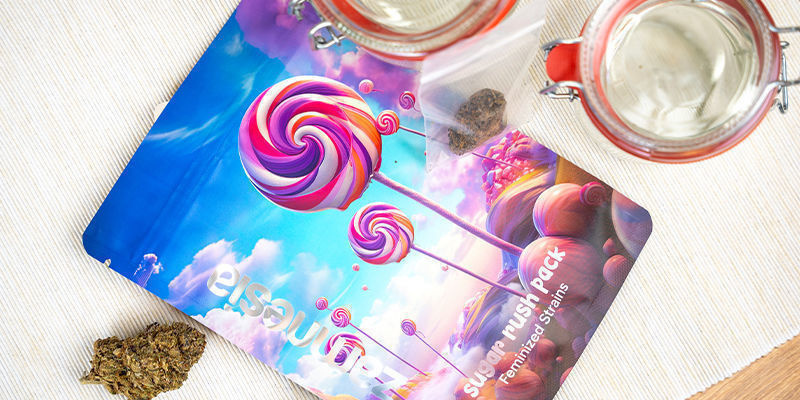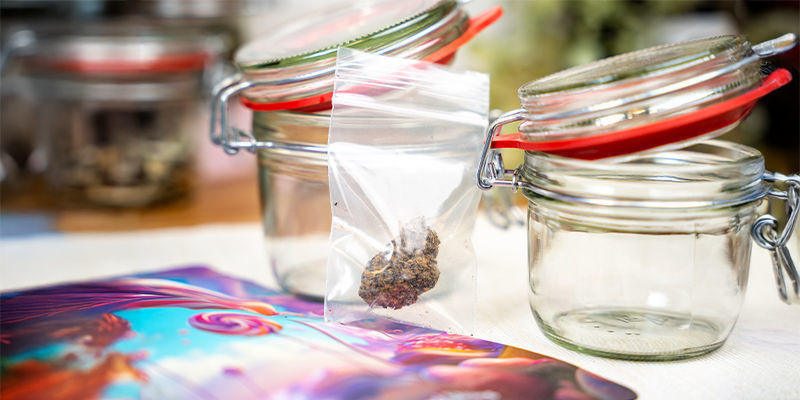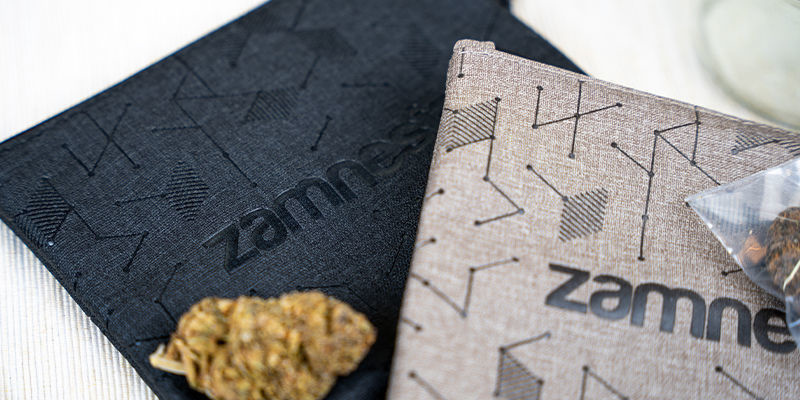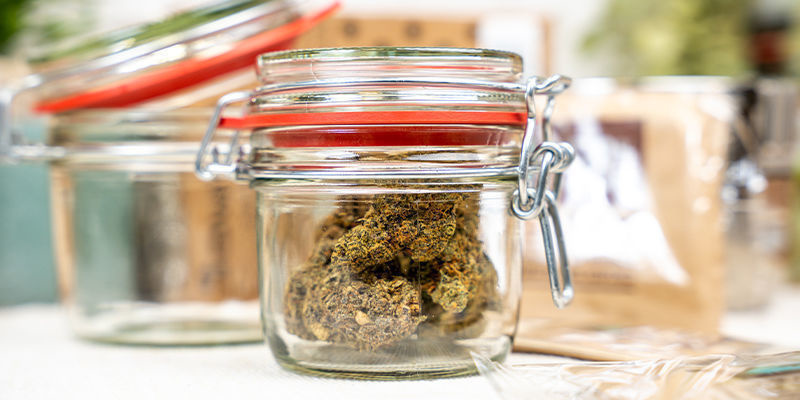
The Evolution Of Cannabis Packaging: From Brown Bags To Luxury Boxes
Weed packaging definitely doesn't look like it used to. Keep reading for an overview of the evolution of cannabis packaging, from mangy paper bags to modern-day Mylar bags, glass jars, and more.
Legalization has catapulted cannabis from the underground into the global economy. As a result, what was previously an illicit industry is now playing catch-up as it adjusts to the demands of a regulated market. In turn, we've seen countless developments in how cannabis is grown, processed, and distributed, but few are as plainly obvious as the packaging it now comes in.
Gone are the days of scoring a few wispy buds in a brown paper bag from a stranger in a parking lot. Today's weed can come in anything from custom Mylar bags to glass jars, tins, pop-top containers, tubes, and more. Join us as we take an in-depth look at cannabis packaging, how it's changed, and why it's integral to a properly functioning legal weed market.
Headshop
Zamnesia's Headshop offers the best deals on all of your favourite smoking accessories, including pipes, grinders, and much more.
Why do we need packaging for cannabis?

Cannabis packaging is important for many reasons. First and foremost, cannabis companies need a way to safely store and transport their product—just like your old dealer did when they divided up their stash using zip-lock baggies. However, in a legal landscape, the packaging your weed comes in needs to do much more than simply house a product. Today, cannabis packaging needs to:
-
Establish a clear identity for cannabis brands
-
Communicate important information to consumers about the product they're buying
-
Preserve cannabis products and keep them at optimal conditions for prolonged periods
-
Comply with strict regulations put in place by the governments overseeing legal cannabis markets
- Keep cannabis products out of reach from anyone for whom they may be harmful, such as children and pets
The evolution of cannabis packaging

As the cannabis industry continues to develop, its packaging continues to change, sometimes dramatically. Below, we'll outline how we've seen cannabis packaging evolve over recent years.
Humble beginnings: The era of paper bags and zip-lock baggies
If you've been buying weed for some time, you'll remember the days when cannabis came packaged in just about anything that could help disguise its signature look and smell—or at least pretend to.
For many sellers on the black market, brown paper bags did the trick, but it was not unheard of for people to score weed that came in anything from zip-lock baggies to tin foil or sheets of paper towel. During the height of cannabis prohibition, you were extremely lucky to score weed in a glass jar—most dealers would simply use what was cheap, available, and able to conceal their weed at least until it was in your hands.
Legalization
Cannabis has been illegal in most parts of the world since the early to mid 20th century, though different forms of prohibition date as far back as 1378. In the US, the infamous Marihuana Tax Act prohibited the production, use, and sale of cannabis federally from 1937 onward. However, in recent years the legalization of cannabis has been reborn.
Burma (modern-day Myanmar) legalized and licensed the cultivation of cannabis in 1939, followed by Comoros in 1975, and the US state of California in 1996. Today, a total of 9 countries have completely legalized cannabis, while many more have decriminalised or legalized the plant to some extent (for medical purposes, for instance). In the US, more states now tolerate cannabis than do not, and that trend is only expected to continue.
With this wave of legalization, cannabis companies had to be quick to adapt their products to the needs of the newfound legal markets they were suddenly operating in. Here, packaging proved central.
In many of the legal cannabis markets around the world, we can identify a trend in packaging that, first and foremost, seeks to meet the rules and regulations put in place to govern the production, sale, and use of weed. With this in mind, the early trends in legal cannabis packaging focused on:
-
Child-resistant containers
-
Clear labelling regarding potency, THC content, terpenes, etc.
-
Warnings about the potential risks of cannabis use and/or age restrictions
Following the initial legalization of cannabis in a few regions, we quickly saw the role of weed packaging switch from solely functional to also complying with government regulations and informing customers about the properties of what they are buying.
Materials & marketing

As the legal markets for cannabis continued to grow, so did the packaging. In maturing and highly competitive cannabis markets (such as the US), we've seen cannabis packaging move beyond its functional and compliance roles and begin to feature the type of elaborate branding we’re used to from other industries.
From eye-catching Mylar bags with unique and colourful designs to classy glass jars with fresh-seal lids—modern cannabis packaging is starting to offer consumers a full experience, rather than just simply serving the function of housing a product.
Cannabis companies like Cookies are even taking their branding beyond bags and jars into the world of apparel and merchandise, creating stores that offer the kinds of glitzy and over-the-top experience that the brand exemplifies. Another prime example of this is Holistic Industries, whose brands and stores offer a similarly immersive experience for customers in tune with the brand’s image.
Sustainability & innovation
In most mature legal cannabis markets, well-established brands are being pressured to become “greener” and ever-more innovative. From the way cannabis is grown to how it's packaged and purchased, consumers are increasingly concerned about sustainability as well as accessibility and transparency. Slowly but surely, it’s no longer good enough for cannabis companies to provide compliant, eye-catching packaging—they also need to do so in a way that’s new, exciting, and, most importantly, sustainable in the long run. While we’re still a long way from seeing cannabis brands completely turn to sustainable practices and packaging, the demand is there, and the brands ready to capitalise on it first will secure their place in the future of modern cannabis.
The future of cannabis packaging: Where to from here?

As we’ve seen above, cannabis packaging has come a long way. For those lucky enough to live in an area where cannabis is legal and regulated, thinking back to the time of brown paper bags, plastic baggies, or compressed bricks of weed might seem like a distant dream (or nightmare). And rightly so. However, while cannabis packaging is arguably the best it’s ever been, that doesn’t mean that there’s no room for it to improve. As technology advances, new opportunities arise for cannabis companies to use packaging to solidify their brand image and the experience they offer. While we don’t have a crystal ball to see into the future, it seems that sustainability might be the new frontier for cannabis packaging, as cannabis companies move to meet the demands of their environmentally conscious customers.
-
 3 min
11 March 2024
Smell-Proof (Weed) Bags For On The Go
Take your weed out of that plastic bag, or get your stash out of that shoebox; it's time to learn all about smell-proof bags. These accessories should be on every smoker's radar. Made to fit your...
3 min
11 March 2024
Smell-Proof (Weed) Bags For On The Go
Take your weed out of that plastic bag, or get your stash out of that shoebox; it's time to learn all about smell-proof bags. These accessories should be on every smoker's radar. Made to fit your...
-
 2 min
1 September 2022
Revelry Supply Gear: Smell-Proof Luggage For Every Day
Revelry Supply gear is here! The Zamnesia Headshop is happy to stock top-quality products from Revelry, one of the hottest new luggage brands from the US. Scroll down for a taste of some of the...
2 min
1 September 2022
Revelry Supply Gear: Smell-Proof Luggage For Every Day
Revelry Supply gear is here! The Zamnesia Headshop is happy to stock top-quality products from Revelry, one of the hottest new luggage brands from the US. Scroll down for a taste of some of the...
-
 2 min
1 May 2020
How To Stay Up-To-Date With The Cannabis Industry
The cannabis industry is always changing. Here's how to stay up-to-date on all things cannabis.
2 min
1 May 2020
How To Stay Up-To-Date With The Cannabis Industry
The cannabis industry is always changing. Here's how to stay up-to-date on all things cannabis.
-
 3 min
1 September 2019
10 Luxurious Stoner Accessories For Every Occasion
Looking to level-up your cannabis lifestyle? Living your best life requires an investment, and this article will lay out exactly what you need to get the most from every domain of stoner life....
3 min
1 September 2019
10 Luxurious Stoner Accessories For Every Occasion
Looking to level-up your cannabis lifestyle? Living your best life requires an investment, and this article will lay out exactly what you need to get the most from every domain of stoner life....














 United States
United States











